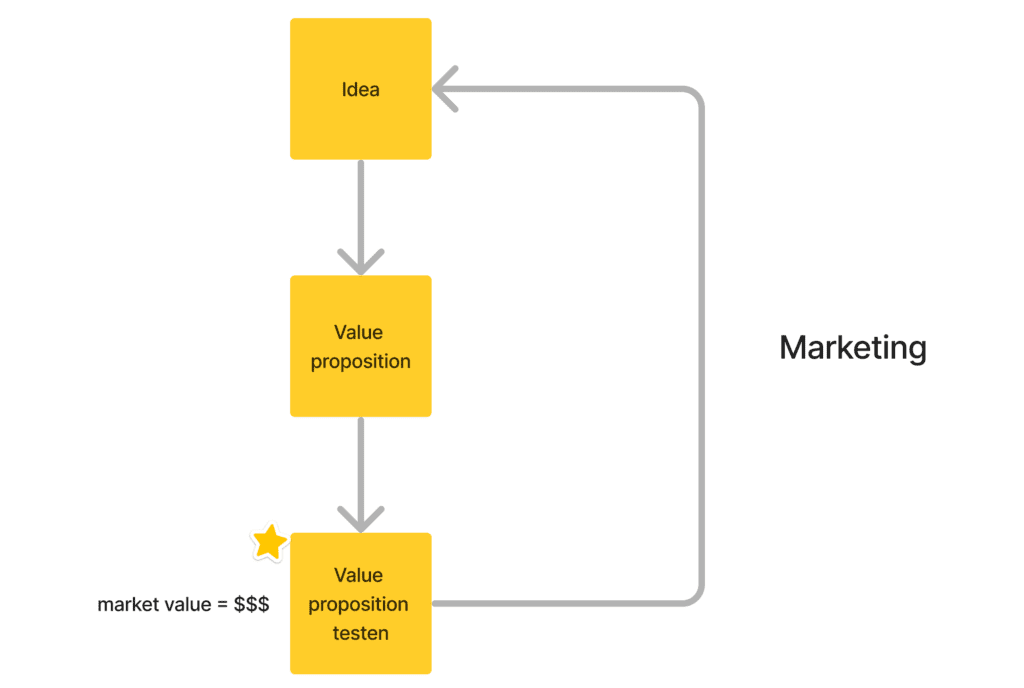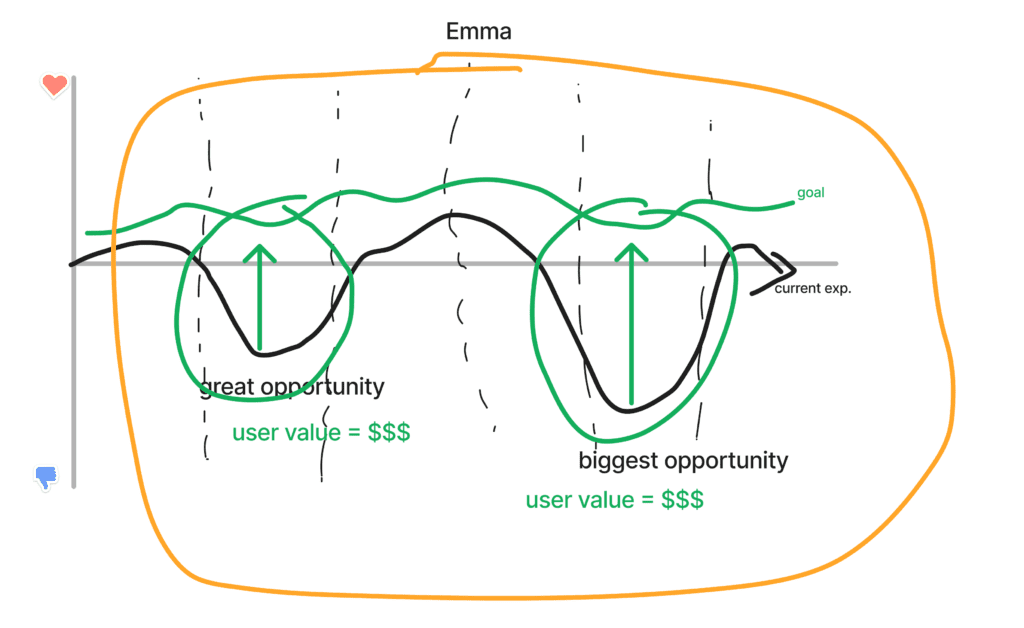In some situations, you have to sell the need for good UX before you can get buy-in from stakeholders. That’s why it’s important that you can be persuasive in a way that stakeholders really understand. Here’s how I did this a few weeks ago.
The new guy
For the past few months, I have been working as a UX consultant at a telco company. The team where I was set up had just started working in an ‘Agile’ SAFe framework, and did not have its own UX designer in the squad, so the responsibilities and roles of UX were not yet 100% clear. As a result, selling good UX to stakeholders is key.
Running around in circles
Having a good relationship with my PO and the new commitment to the Agile framework meant there was room for autonomy. This allowed me to experiment with project approaches: UX workshops, bringing in additional design phases, in-depth user research etc.
Of course, there has to be buy-in each time before a new approach or additional resources are approved. To my mind, this went pretty well. I explained my plans of action, threw around some expensive UX terminology, and everyone nodded along enthusiastically.
Yet, after some pondering among stakeholders, the same questions kept coming back, “But we have done research before, right?” (referring to market research), or “We need screens as soon as possible, shouldn’t we submit something to management first and then do the user research?”.
I felt like we were running around in circles. I didn’t blame anyone for not understanding me. I had to be doing something wrong. Even though, I won a moment in a cross-functional team’s agenda to have a Lean UX workshop moment to align with a cross-functional team, asking to do proper user research — after market research had already been done — was a harder sell than I thought. There had to be a solution to tell this in a way that I could convince my non-UX stakeholders.
Speak their language
I began by telling them what they already knew e.g. the value of marketing and product pricing, two great examples that I knew they would understand. For each type of value, I talked about the outcomes they create, which in turn are translated into a specific business value, money. Below is one of the diagrams I created in FigJam during the meeting to quickly explain market value.

When they agreed on the marketing part, I moved on to the next one and repeated the same logic: explaining how these teams end up creating a well understood business value, money.
Now that I was speaking their language, it was time to create empathy with the one value I wanted to talk about, user value. Most stakeholders know that good UX translates into making more money. On the other hand, many non-UX stakeholders have no idea how or what good UX is all about. Here are a few reasons why:
- some can’t see the difference between good or bad design;
- some don’t fully understand that UX consists of getting to know your users by actually talking to them;
- and especially most don’t see where or how we can add value to the user and business.
For this, I used a quick drawing to show how UX creates user value and, in turn, how it can create business value. I learned this from Jared Spool and Dr. Leslie Jensen-Inman’s UX Strategy Talks program at Leaders of Awesomeness.

I began by drawing a typical user’s journey diagram to tell the story. The user’s journey allows us to explain what can happen, when it can happen, where we need to prioritise, and where we can bring the greatest value to the user.
The use of diagrams and sketches improves semantic memory. This way of using shared understanding and a user journey creates empathy. Moreover, it helps you understand when the exact “AHA” moment occurs with your stakeholders during the conversation. I could clearly tell when I was experiencing a real “AHA” moment. That was a moment when I felt everyone in our conversation became relieved and future discussions went a lot easier.
Final thoughts
The goal is not just to get buy-in from stakeholders and get your resources for user research, it’s also about maturing your direct stakeholders and your team in UX so that they start to see the difference between good and bad UX. Because before they can understand the difference, they must be willing to look.